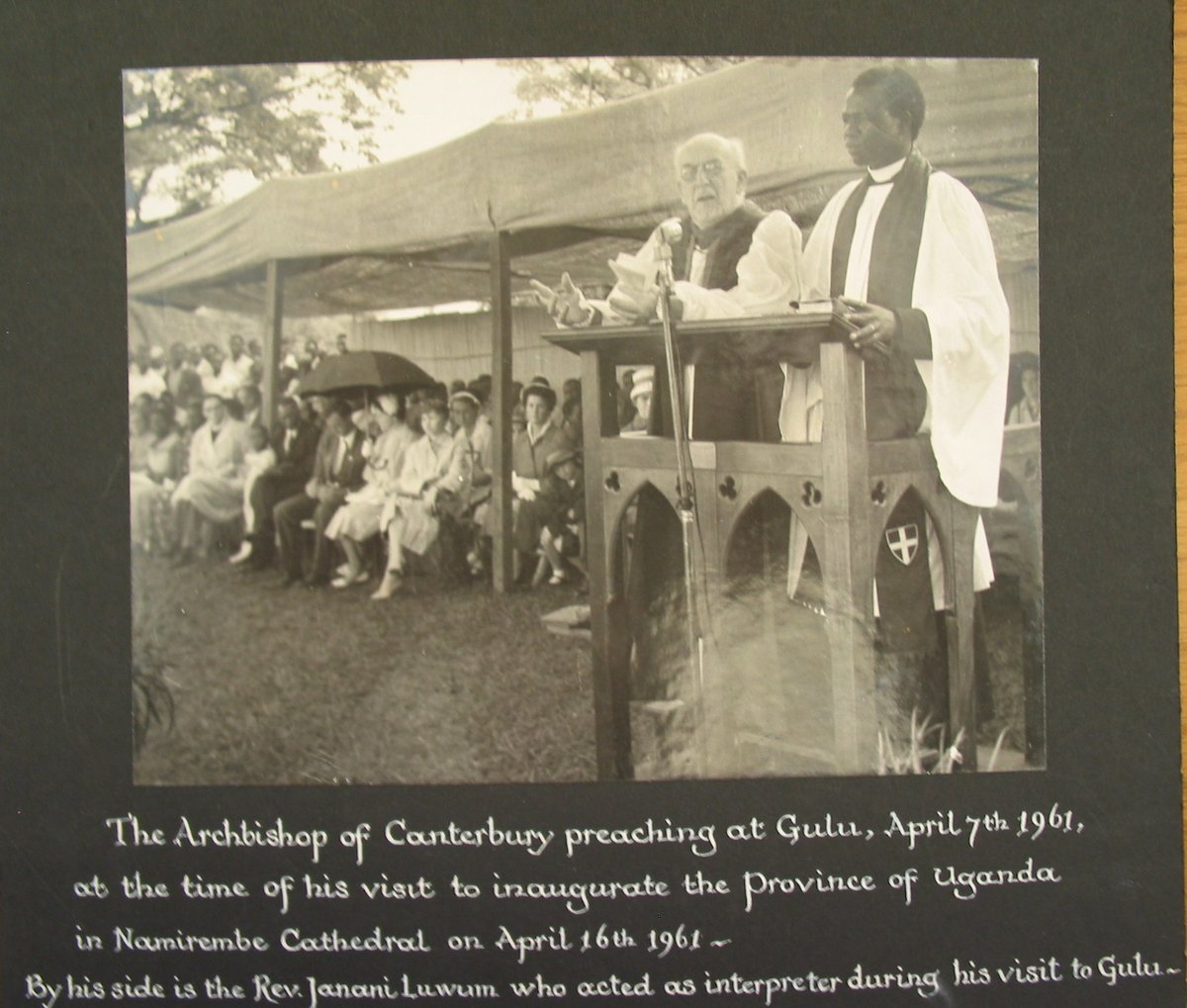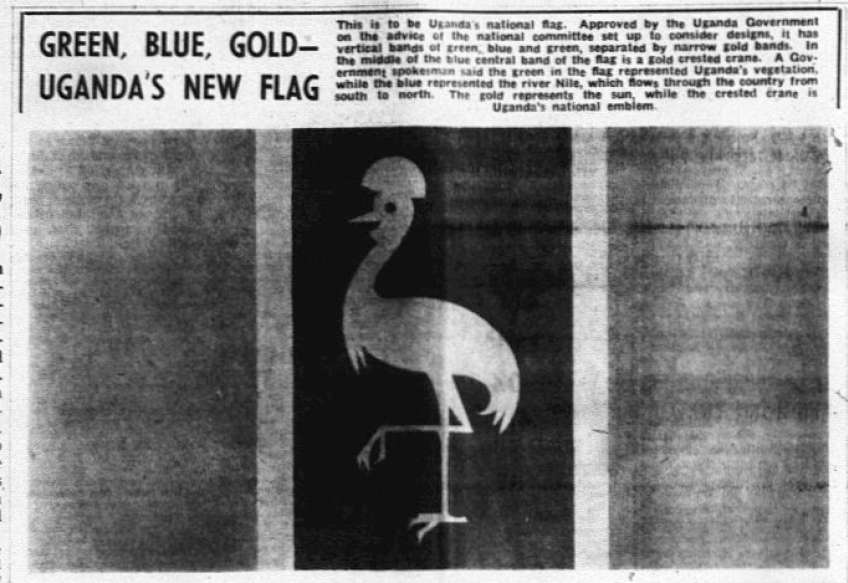
Uganda's flag, PART II. Please see the original post (pinned), for context. @melvinnasasira and @kadobamosesUG raise an important question. What role did Grace Ibingira play in the creation of Uganda's national flag? 1/15
In short, it is my argument that Grace Ibingira was instilled in public memory as the creator of Uganda's flag as a way of silencing the role of the DP in the creation of the national banner. 2/15
.@lvcgraphics, who does absolutely amazing work, has recreated the original design proposed by DP. The original Crane would have been entirely in gold. 3/15 

Grace Ibingira, who served in numerous key roles in the UPC, including secretary-general during the mid-1960s, suggested that the DP had selected green and white due to its affiliation with the DP, whose party colours were also white and green. 4/15
The Democratic chairman of the Flag Committee, W.S. Kajubi, criticised Ibingira's claim. After expressing his shock at Ibingira’s consternation, Kajubi noted that the UPC attorney had only shown up on 2 occasions during the committee’s 10 days of deliberation! 5/15
Ibingira arrived only toward the very end, ‘when the question of the national colours had been decided and only the design had to be discussed’. 6/15
Kajubi noted: ‘The colours of green, blue and gold were unanimously agreed upon by all those who attended the meetings, including the other representatives of the UPC. These three colours were selected not to represent certain political parties, 7/15
but to reflect particular aspects of our country.' Be that as it may, once UPC-KY secured power, they recreated the flag, stopping production throughout Uganda. They justified the move on a point of technicality. 8/15
Ibingira argued that the flag had only been approved by technical experts in the UK, who failed to understand that DP’s particular shade of green ‘will fade in a tropical climate and that the shade of blue cannot be adequately reproduced in the material suitable for flags’. 9/15
He continued: ‘In light of this advice, given by the technical experts, the Government has decided the design shall be reviewed in order to avoid these difficulties.’ 10/15
But if UPC representatives on the Committee had approved the original design, why did Ibingira take such issue? We know that DP's design was highly influenced by writers from Tesoland. 11/15
Teso District Council General Purposes Committee argued that Uganda’s national flag should feature blue to represent Uganda’s water, and green to draw attention to vegetation. They also argued that the crested crane would symbolise continuity with the past. 12/15
My hypothesis is that Ibingira was attempting to assert the power of the Ankole branch of UPC over its counterpart in Teso. This was part of a larger strategy of silencing growing Catholic power in the country, symbolized in Obwangor's Catholic background and 13/15
the appoint of Uganda first's Catholic prime minister in a kingdom of Ankole, Enganzi John Kabaireho. Uganda's new flag ensured that the DP's contributions toward state building would be removed from public memory. 14/15
.@provocativu has kindly offered Uganda's flag on the eve of Independence. You will see why EMK Mulira and Rajat Neogy worried about the colonial continuities. 15/15 

• • •
Missing some Tweet in this thread? You can try to
force a refresh












